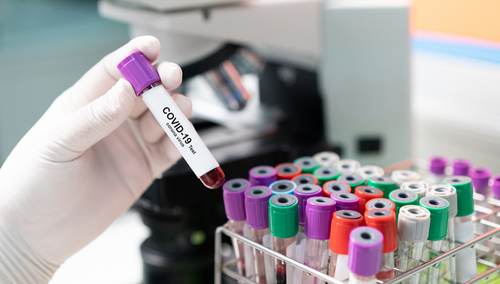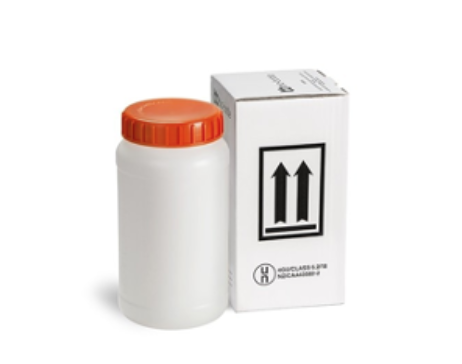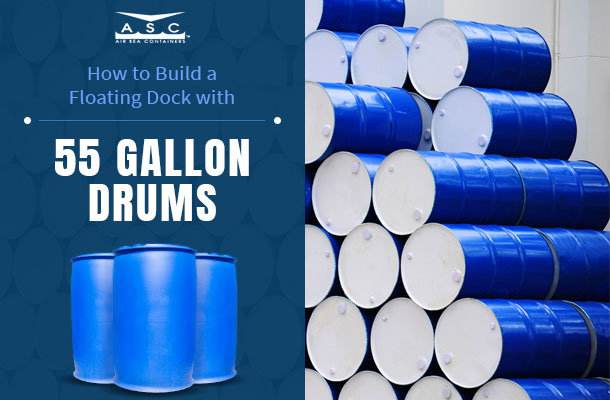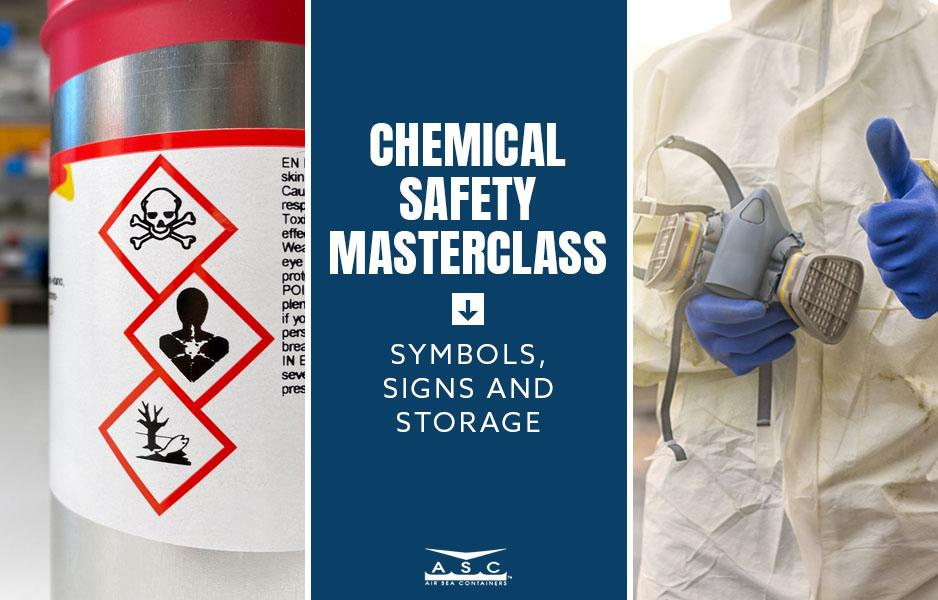Three-Layer Diagnostic Packaging for Coronavirus Test Kits
The UN three-layer packaging system forms the basis of safe packaging for transport of specimens from suspected or confirmed COVID-19 patients. The layers are as follows:- Primary Receptacle: A watertight and leak-proof receptacle that contains the specimen (such a nasopharyngeal swab or blood sample). If the specimen is a liquid or shipped in a liquid, such as a saline solution, the receptacle must be wrapped in sufficient absorbent material to absorb all liquid present in the receptacle.
- Secondary Receptacle: A second watertight and leak-proof receptacle that surrounds the primary receptacle. Multiple wrapped primary receptacles can be placed inside one secondary receptacle, but the secondary receptacle must contain enough absorbent material to absorb any liquid contained within. The secondary receptacle must also be surrounded by a leak-proof or spill-proof outer barrier such as a sealed plastic bag.
- Outer Shipping Package: Rigid outer packaging that protects the primary and secondary receptacle against damage from sources such as rough handling or moisture, typically a UN 4GU corrugated box.

Temperature-Controlled Shipping for Coronavirus Test Kits
Like many biological specimens, suspected or confirmed COVID-19 samples must be shipped using temperature-controlled methods to maintain the integrity of the specimen. The CDC’s temperature guidelines are:- Specimens should be shipped between 2ºC and 8ºC for up to 72-hours after collection. Specimens stored and shipped over a period greater than 72-hours should be frozen at -70ºC.
- Frozen specimens should be shipped via overnight air using dry[3] ice.
Labeling for Coronavirus Test Kit Specimens
A key part of safely packaging an infectious substance is labeling it correctly and completely. The labeling for a coronavirus test kit specimen should include:- The name, address, and daytime contact information of the shipper and receiver
- Instructions for proper use and handling of three-layer packaging
- An itemized list of the package’s contents
- The substance’s proper shipping name and UN number
- A hazmat shipping label identifying the package as containing a UN Hazard Class 6.2 infectious substance
- A UN 1845 (dry ice) label if the specimen is being shipped with dry ice
Diagnostic Packaging from Air Sea Containers
Air Sea Containers is a premier provider of diagnostic and infectious packaging, and we have several options available for shipping coronavirus test kit specimens. Our infectious packaging materials conform to all relevant standards, including IATA Dangerous Goods Packing Standards. Some of our top choices include:- Bio Bottle Packaging Kits: All-in-one shipping kits that include an HDPE secondary container, a UN 4GU overpack box, hazmat shipping label, and other essential components. (May require additional refrigeration.)
- Bio-Freeze Pack: The ideal solution for shipping frozen specimens, thanks to the included Pink Ice solution, which keeps your specimen below freezing temperature for up to 48-hours.
- Biohazard Specimen Bag: These tough LDPE bags include large biohazard warning symbols and are suitable for use as a primary container. (Must be used as part of a complete kit.)
- UN Hazmat Class 6.2 Infectious Substance Labels: These rugged peel-and-stick vinyl labels provide a clearly visible warning for coronavirus test kits that’s resistant to fading and moisture damage.

Air Sea Containers 2L Bio Bottle Kit
The hazmat experts at Air Sea Containers are dedicated to continually monitoring the unfolding COVID-19 situation and providing the most up-to-date information to our customers. Before[5] purchasing packaging for your coronavirus test kit, please contact Air Sea Containers to make sure you have the latest information, as guidance from medical professionals and government regulators may change rapidly.










